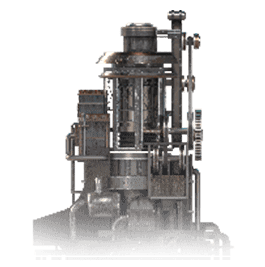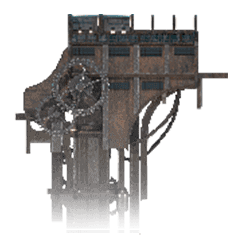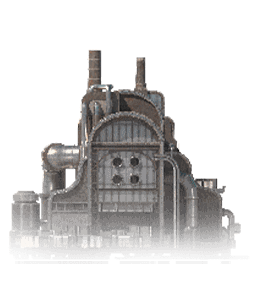Districts
USEFUL PAGES
List of Synergy and Conflicting Events
FP2 Guides
Factions list
| Housing | 40 | 200 | 200 |
| Food | 40 | 200 | 600 |
| Extraction | 40 | 150 | 600 |
| Industrial | 40 | 100 | 600 |
| Logistic | 40 | 200 | 400 |
Districts are the most basic construction mechanic in Frostpunk 2.
They are structures that allow the city to function and both provide and consume various resources.
All districts cover multiple Tiles and cost ![]() Heatstamps and
Heatstamps and ![]() Prefabs to build. Some must be built starting from resource deposits such as fertile ground or frozen forest. Many districts additionally have adjacency bonuses (referred to in-game as "area affects"), for example reducing
Prefabs to build. Some must be built starting from resource deposits such as fertile ground or frozen forest. Many districts additionally have adjacency bonuses (referred to in-game as "area affects"), for example reducing ![]() Heat cost, or adjacency maluses creating problems like
Heat cost, or adjacency maluses creating problems like ![]() Squalor or Disease.
Squalor or Disease.
All districts require ![]() Workforce to function or they will shutdown.
Workforce to function or they will shutdown.
Districts can be damaged by Squalor and protests. When the damage fills the bar it will become unusable but can be repaired by consuming ![]() Prefabs.
Prefabs.
Districts can be turned off using the "power button" at the bottom of their menu.
Districts can have special abilities at disposition usually in accord to the buildings in it, like Emergency Session or Rush Researchers.
Expansion[edit | edit source]
Districts can be expanded once. This action has multiple effects such as increasing their area by 3 tiles, increasing their output and allowing the construction of an additional buildings within (for a total of 2), which act as district upgrades.
Expanding costs 50 ![]() Heatstamps and 50
Heatstamps and 50 ![]() Prefabs. district generally does not cost more maintenance resources such as
Prefabs. district generally does not cost more maintenance resources such as ![]() Workforce or
Workforce or ![]() Materials, while increasing the resource output: therefore making the district more efficient overall.
Materials, while increasing the resource output: therefore making the district more efficient overall.
The area of a district can be Adjusted for the cost of costs 50 ![]() Heatstamps and 50
Heatstamps and 50 ![]() Prefabs, anytime only in certain limits.
Prefabs, anytime only in certain limits.
This action is generally quite useful to reach adjacent deposits once the initial resources have been depleted.
Temperature[edit | edit source]
Since patch 1.3 every district has their own temperature level just like Frostpunk 1.
If left unchecked the people working or living inside a cold district will start to become ill, injured or worse.
![]() Heat can be allocated up to a maximum of 5 levels per district.
Heat can be allocated up to a maximum of 5 levels per district.
Once a district becomes "Warm" it will provide 1/4 ![]() Heat as proxymity heat buff to the adjacent tiles. This behaviour encourages smart city planning to get the most out of this mechanic.
Heat as proxymity heat buff to the adjacent tiles. This behaviour encourages smart city planning to get the most out of this mechanic.
It is possible to create a heat chain link of districts, so when one becomes warm its proxymity heat will trigger the closest over and over.
Temperature can be modified by laws, hubs, building and Insulation.
Once researched in the idea tree it will permit to insulate an individual district for the cost of 50 ![]() Heatstamps and 50
Heatstamps and 50 ![]() Prefabs.
Prefabs.
Insulating a district will permanentely increase their temperature value by 1 up to 2.
Researching Insulation technology level 2 is retro-active to already insulated districts.
District Types[edit | edit source]
There are several District Types in Frostpunk 2. Each of the Districts have their own unique role in the city.
In the prologue some basic proto-districts are also available with reduced costs.
Hubs[edit | edit source]
Hubs are special buildings in FP2 that have unique effects on the neighboring Districts. In order for hub to take effect on the district, at least 3 district hexes should be in its range of influence.











